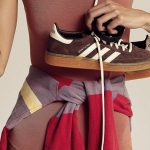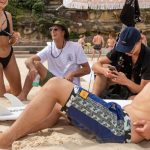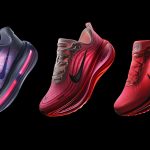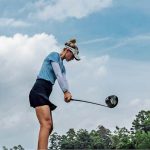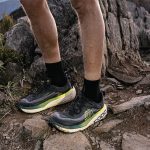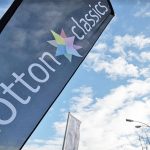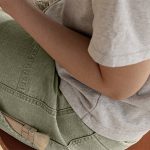When Peter Devin, VNUs Outdoor Group show director, officially opened the 2005 Outdoor Retailer Summer Market this year, he said that The Salt Palace hosted the largest show, in terms of exhibition space, in ORs history. While many shows grow until they are too big and finally fizzle out, OR appears to be managing its growth with a lot of help from the physical restrictions of the Salt Palace venue. BOSS saw traffic and sensed an energy not unlike the days in Reno, as a very healthy spring at retail combined with some of the strongest new product introductions in recent memory to help solidify ORs position as the preeminent specialty show in North America.
The energy and optimism was not limited to the vendor side. Retailers seemed to recover from a tough early spring as sell-through picked up in the early summer and delivered solid results through July. Many vendors told BOSS that retailers are not only eager to place pre-season orders, but are ordering early on many key hardgoods and categories. Many retailers told BOSS that the level of innovation on the floor was surprising given the many evolutionary shows in the recent past.
BOSS speculates that the move by consumers to “luxe” and performance as a lifestyle trend gives retailers more permission to seek out higher-end goods and push the boundaries of innovation in their stores. The result was a very healthy show for the premium brands as price took a back seat to the best, the lightest, the fastest, and the most efficient.
The biggest surprise of the show was the energy in the pavilion, which saw its last Summer Market until OR grows out of the newly expanded Salt Place. Progress will be good for the total show, but the tent format injected a lot of energy into the whole show experience, with Life is Good, Mion, Crumpler, Mountain Khakis, MacPac, and several other emerging brands creating a real draw for retailers to make their way to the back of the hall.
BOSS almost hates to see the tents go, but the expansion will clearly be a critical next step in the shows growth and development. The tents were erected on the pad that was poured for the new hall and Peter Devin told BOSS that the walls of the new hall will start to go up in two weeks, and will be ready in plenty of time for next year's Summer Market.
With 477 booths off of the main floor, many key brands were forced to set up shop under the giant white tent, and before the show began several were wary, even disappointed with their placement. In the past it was very difficult to attract retailers away from the main hall, and several brands had contingency marketing plans to lure crowds to their booths. For the most part these plans were not needed since the pavilion upgraded and changed layout. Many retailers felt it was the place to be if you wanted to discover new brands.
The show also boasted an unprecedented number of off-floor seminars and clinics as OR lined up a group of pre-show speakers and clinics that rivaled any industry convention.
Outdoor Industry Association again hosted the bi-annual industry breakfast on the first day of the show, again playing to a full house. OIA greeted a standing room only audience of vendors, and retailers with the organizations presentation of research and trends. None were disappointed in the education and entertainment inherent in the event. OIA used this opportunity to introduce its latest Toolkit for the Trade focusing on getting youth active.
The toolkit provides ideas, programs, and useful resources for marketing outdoor activities to 5-18 year-olds. According to research conducted earlier by OIA, this is a key demographic to target for the long-term health of the industry, with 90% of current outdoor participants introduced to the outdoor lifestyle at an early age.
The keynote speaker for the breakfast reinforced this research and the importance of getting children active in nature. Richard Louv is a journalist with the Union-Tribune in San Diego and author of Last Child in the Woods, an account of the effects of todays electronic culture on childrens health, behavior, and mental well-being. In the book, Louv covers everything from the correlation between Attention Deficit Disorder and the lack of physical exercise to urban planning and its effect on obesity.
Mr. Louvs book focuses on the fact that this is the first time in tens of thousands of years that children are no longer going outside to play, and this trend has taken hold within a matter of decades. Today, children are plugged into some form of electronic media 44 hours per week longer than many adult work weeks. He also pointed to the fact that 40% of school districts in the U.S. have eliminated recess and found humor (or horror, depending on your perspective) in at least one instance where he found a sign at a school playground that said “No Running”.
These trends do not bode well for the Outdoor Industry, but the first step understanding the problem has been made and OIAs toolkit provides the resources needed to create an effective outreach program. OIA also announced a new agreement with the BLM, called Get Fit with US, which will begin a marketing initiative on many public lands across the country that focuses on outdoor recreation.
To ensure a constant stream of new ideas and fresh perspectives, every year one-third of the seats on the OIA Board of Directors go up for election. This year, OIAs Elected Seats include Kim Coupounas, CEO of GoLite, as the new chairman; Angel Martinez, CEO of Deckers; Bill Sweasy, chairman & CEO of Redwing/Vasque; Jim Clark, CEO of Yakima; Matt Hyde, SVP of Merchandising at REI; and Peter Metcalf, president & CEO of Black Diamond Equipment.
OIA board also appointed seats to Jeff Johnson, director of merchandising at Cabelas; Roody Rasmussen, president of Petzl; Beth Brownlee, regional sales director for Columbia; and Beaver Theodosakis, president of Prana.
“The new Board's contributions will help OIA grow in relevance to our existing members while broadening our appeal,” said Frank Hugelmeyer, OIA president.
Back on the show floor, the watersports section of the show floor was buzzing with talk of consolidation and innovation. The 2005 Outdoor Retailer Summer Market Show Handbook listed over 100 companies involved in paddle sports. From industry giants like Confluence and Johnson Outdoors to small companies like Heritage Kayaks and Cannon Paddles, the booths were filled with canoes, kayaks, paddles, and accessories designed to impress specialty retailers and their customers. Enthusiastic exhibitor reps and product managers greeted retailers who arrived curious to have a look at the kayaks promoted in pre-show communications.
After four days of walking the show and listening to product presentations, two main themes emerged. First, comfort is king. Every kayak and canoe manufacturer talked about adjustable seats, backrests, and thigh pads. Across the brands, retailers and consumers will find a dizzying selection of construction materials and techniques for making boats fit the paddler. Necky presented a seat designed to reduce pressure on the sciatic nerve and several models from Perception were outfitted with thin Liquicell seat pads to reduce friction.
The most eloquent corporate pitchmen entertained the crowds surrounding frequent paddle tank presentations. Stroke by stroke commentary accompanied paddlers attempts to make as many turns, tricks, and rolls as possible in the small tank.
The second main theme at the show revolves around the concept of a specialized kayak or canoe for every type of paddler. Sit-on-top boats for kids, kayaks outfitted for the most hard-core fishermen, touring kayaks with storage capacities ranging from 24 hours to a week on the water just scratch the surface of the variety and range of models presented. Whitewater boat offerings ranged from models designed for water parks to open water and riverboats, large paddlers and small. Prijon called its Combi 359 Tour “one of the most versatile boats on the water.” At Current Designs, designer Nigel Foster created a boat specifically for paddlers under 150 pounds. Previously successful models like the Wilderness Systems Tsunami and the Mad River Canoe Adventure line were expanded to offer paddlers a range of lengths.
Most of the boats address applications already in use. Confluence is developing a kayak fitness program to add a new cross-training option to the mix. When launched, the program will likely include instructor training and consumer-oriented DVDs. Two kayak models will be marketed for fitness applications.
|
Confluence hopes to introduce to paddling new potential users and provide an additional reason for existing paddlers to get on the water. The challenge here will be creating the infrastructure of instructors and retailers to push this fitness model. Confluence is in discussions with certain nation-wide fitness chains to develop courses that focus on this sector, and hopefully this initiative will evolve into “the next spin-class” fitness craze. |
OR
|
|
|
|
|
|
|
|
|
|
|
|
The customization seen in boats carried over to paddles as well. Werner, Bending Branches, and Seven2 presented three different approaches to adjustable paddle shafts. High-end paddles from Werner and Seven2 allow paddles to quickly change the blade angle. Bending Branches telescoping ferrule permits paddlers to change the length of the paddle to fit different family members or paddling conditions.
On the opposite end of the main aisle, the climbing companies were in the middle of a similar atmosphere with positive retailer responses to new product and a true feeling of optimism about the market. After several years of cautious optimism and several more years of flat sales preceding that the enthusiasm was contagious. The climbing demo area received a makeover, thanks to Rock & Ice Magazine sponsoring a new climbing wall and the usual crowds gathered for autograph signings and various rock and ice climbing competitions.
Now that the shoe price wars have subsided and the extended range cam designs are thoroughly entrenched in the market, retailers were ready to buy, and many vendors told BOSS that the climbing market is seeing healthy growth at least in the mid-single-digit range. The major themes of the past five years are continuing ropes and slings are getting skinnier while cams and harnesses are getting lighter.
While not specifically identified as a gateway activity, the climbing market continues to have the most youthful feel of the show with the superstar athletes drawing crowds that many other categories would never imagine. In turn, many of the brands represented on the south side of the hall have a much more youth oriented marketing message and those who dont are quickly trying to change.






